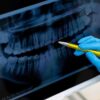Copyright © 2023 XStore theme. Created by 8theme – WordPress WooCommerce themes.
Need help? Call us:
+1 437 733 9994
Shopping cart (0)
Subtotal: $0.00
Spend $3,050.00 to get free shipping
Congratulations! You've got free shipping.











